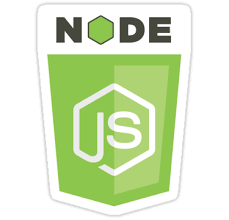
NODEJS
Node.js® is a JavaScript runtime built on Chrome's V8 JavaScript engine. Node.js uses an event-driven, non-blocking I/O model that makes it lightweight and efficient. Node.js' package ecosystem, npm, is the largest ecosystem of open source libraries in the world.
Razones para utilizar
NODEJS

The major advantage, he tells, is that this JavaScript language doesn’t block I/O – meaning input/output communication method. Here, though, the developer community has two views. Some argue, that applications with many CPU cycles can crash then. Others say it’s not a big deal at all, as Node code works in small processes.

With NGINX, one master process can control multiple worker processes. The master maintains the worker processes, while the workers do the actual processing. Because NGINX is asynchronous, each request can be executed by the worker concurrently without blocking other requests.

NGINX is built to offer low memory usage and high concurrency. Rather than creating new processes for each web request, NGINX uses an asynchronous, event-driven approach where requests are handled in a single thread.

NGINX was originally created by Igor Sysoev, with its first public release in October 2004. Igor initially conceived the software as an answer to the C10k problem, which is a problem regarding the performance issue of handling 10,000 concurrent connections.
